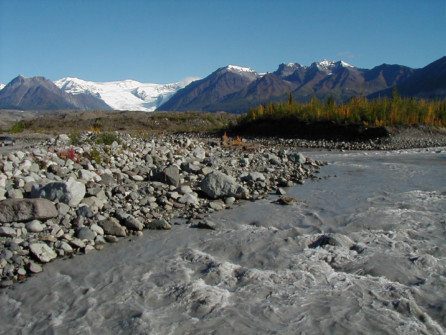Alaska Reality TV: Survival of the Fittest in Alaskan Wilderness
Alaska is a welcoming place of wonder and warm memories for visitors and residents alike. But Alaska can also be dangerous, and even deadly, for those who live in, or decide to test themselves against, its harsh natural environment. That lore and lure of life or death off the grid has become a TV ratings thrill ride thanks to a variety of Alaska reality television shows about adventure, survival and competition in Alaskan wilderness. The beautiful but hostile Alaskan landscapes and perilous scenarios of hunger, extreme weather, isolation and desperation push people to their best and worst, and even to their respective brinks. Even the Alaska production crews face the challenges of working in the wild, far from daily comforts and even electricity.
Current Reality TV Series Featuring Alaska
Life Below Zero (2013-present, more than 100 episodes) is the biggest hit of the genre, focusing on real Alaskans who lead semi-subsistence and survivalist lifestyles in remote regions of Alaska. Sue Aikens is the longtime star, a tough, sharp-tongued 50-something who lives alone along the Kavik River deep in the unforgiving Arctic. She’s a bear attack survivor and showbiz wiz, having appeared in other Alaska reality shows before Life Below Zero. She maintains social media accounts and operates her Kavik River Camp for visitors seeking her extreme Alaska experience. Other stars include the Hailstone family, who live in Noorvik, where matriarch Agnes has roots dating back generations; the Salitans, who operate a lodge in Iliamna; and others, including a few mushers, a few couples, and lots of loners, all with diverse backgrounds and all who yearn for quiet, distant places, independence and subsistence lifestyles.
The Last Alaskans (2015-present, 24 episodes) takes rural existence and survival even deeper into the Alaska wild, following families and individuals living in the vast and sometimes vicious, beautiful but often brutal Arctic National Wildlife Refuge. That’s more than 100 miles above the Arctic Circle and around 400 miles north of Fairbanks, for those keeping track. The title refers to the distinction that these people hold as being the last allowed to live in the refuge, which the show notes is otherwise banned by federal government. They hunt, fish and trap; they constantly chop and burn wood; they encapsulate Alaskans living off, and respecting, the land. The show has been lauded for its grittiness, authenticity and the harsh reality of living in the wild.
A similar show focused in one place is Yukon Men (2012-present, 48 episodes), which chronicles the unique challenges of life in the tiny town of Tanana, set in the Interior along the Yukon River. This show is a true slice of village life: subsistence hunting and fishing, driving dog sleds and snow machines, watching out for family and other community members, and working practically nonstop in preparation for what today, tomorrow and the next season hold. It also shows a deep connection between fathers and sons, who share traditions, responsibility and work ethic.
Previous Alaska Reality TV Programs
The McCarthy locale in Edge of Alaska (2014-2017, 32 episodes) isn’t as extreme and the risk of survival isn’t quite as urgent. But the challenges of life on the farthest end of Alaska’s road system, deep in the unrelenting Wrangell-St. Elias Mountains, are real and occasionally really dangerous.

Wrangell-St. Elias National Park view from McCarthy.
Ultimate Survival Alaska (2013-2015, 37 episodes) took reality competition programming to Alaska extremes. Generally, contestants (including Iditarod champion Dallas Seavey, who appeared in all three seasons) were left in the wilderness to face the elements with scant gear and race in stages to faraway finish lines under set time limits. Season 1 featured survivalists racing individually; Seasons 2 and 3 had four three-person teams with diverse skills going head-to-head. The show received mixed reviews and didn’t survive for a fourth season.
A twist on the Alaska survival competition shows came in The Alaska Experiment/Out of the Wild (2008-2011, three seasons); instead of grizzled, seasoned survivalists, the competitors were urban professional “volunteers” who had to work together (and with occasional help from outdoor experts) to get through life in the Alaska’s wild. Season 1 featured four teams of 10 stationed in specific bases, while Season 2 focused on just one group of nine who had to travel to civilization. Only four people made it to the end of Season 2’s challenge; the other five used emergency devices to call for rescues. Hunting, hunger and exhaustion were common quitting causes. Season 3 moved to Venezuela and dropped The Alaska Experiment from the title.
Survival celebrity Bear Grylls brought his Man vs. Wild reality adventure show to Alaska a few times. In Season 1 (2006) he skied and glissaded (slid atop snow on his behind) in the Chugach Mountains. In Season 4 (2009) he took on a more traditional tundra adventure. Then in his new program, Running Wild with Bear Grylls, his 2015 Alaska adventure stopped at Exit Glacier where he met up with then President Barack Obama.
The even rawer reality adventurer Les Stroud and his Survivorman series came to Alaska for extreme kayaking and survival in 2007.
